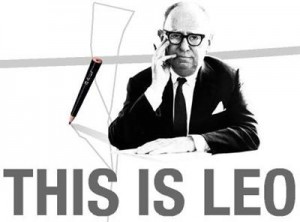 Exactly how much money is spent on advertising every year in the USA, is a difficult question as one will get different answers from different folks. According to AdAge the US spent $149 billion in 2007, which equated to $4,717 per SECOND!
Exactly how much money is spent on advertising every year in the USA, is a difficult question as one will get different answers from different folks. According to AdAge the US spent $149 billion in 2007, which equated to $4,717 per SECOND!
$4,717 every second of every minute, every hour, every day! How long is it going to take college graduates before they earn that kind of money per MONTH? The irony is that advertisers spend that kind of money while they have no idea how advertising works. What we do know is that “it works in some definable ways well enough to make more effective advertising” (Richard Vaughn, 1986).
What is effective advertising? According to David Ogilvy (1911 – 1999), the Father of Advertising, the purpose of advertising is to sell, NOT to entertain. Ogilvy stated that advertisers would not spend that kind of money (nearly $5,000/second) to entertain consumers because if consumers want to be entertained, they have to fork out money … if one wants to see U2 in concert, one has to reach deep into one’s pockets to pay for admission. U2 is NOT going to pay you to attend one of its concerts! Ogilvy was responsible for some of the best advertising ever, the most memorable being his Rolls Royce ad (“At 60 miles per hour …) and the man with the patch for Hathaway shirts.
Leo Burnett (1891 – 1971) created characters such as Tony the Tiger, Morris the Cat, Charlie the Tuna and the Jolly Green Giant to sell products. When he was warned that these characters would move consumers away from the advertising, he responded that, to the contrary, they would pull consumers INTO the advertising, hence the strategy being called empathy!
 The strategy of Rosser Reeves (1910 – 1984) was called USP: Unique Selling Proposition. According to his strategy, one had to find a unique element of each product and hammer away at it in the advertising. The most successful example of this strategy was M&Ms’ “Melt in your mouth, not in your hands.”
The strategy of Rosser Reeves (1910 – 1984) was called USP: Unique Selling Proposition. According to his strategy, one had to find a unique element of each product and hammer away at it in the advertising. The most successful example of this strategy was M&Ms’ “Melt in your mouth, not in your hands.”
Given the meaning of the word unique (one of a kind) and that very little (if any) is unique in the 21st century, many will argue that this strategy has become obsolete? Not so fast … by simply substituting “unique” with “one,” this strategy still warrants its place among the best. All one has to do is to hone in on a selling point, which a competitor may possess, but did not capitalize on … thus, a pre-emptive strategy.
strategy has become obsolete? Not so fast … by simply substituting “unique” with “one,” this strategy still warrants its place among the best. All one has to do is to hone in on a selling point, which a competitor may possess, but did not capitalize on … thus, a pre-emptive strategy.
Everyone knows the wonderful Beetle advertising of the 60s and 70s. This advertising which was voted the best ever, was the brain child of Bill Bernbach (1911 – 1982) and based on his “Honesty with a twist” strategy: never lie, he said, simply stretch the truth a little. With his Art Director, Helmut Krone, the Bernbach/Krone team left a legacy of advertising that we will most probably never see again … oh, where are the days?
The foregoing are examples of the four greatest advertising practitioners in advertising history. It has been 27 years since the last one (Reeves) died. The time has come for more greats … could YOU be the next one?

Speak Your Mind